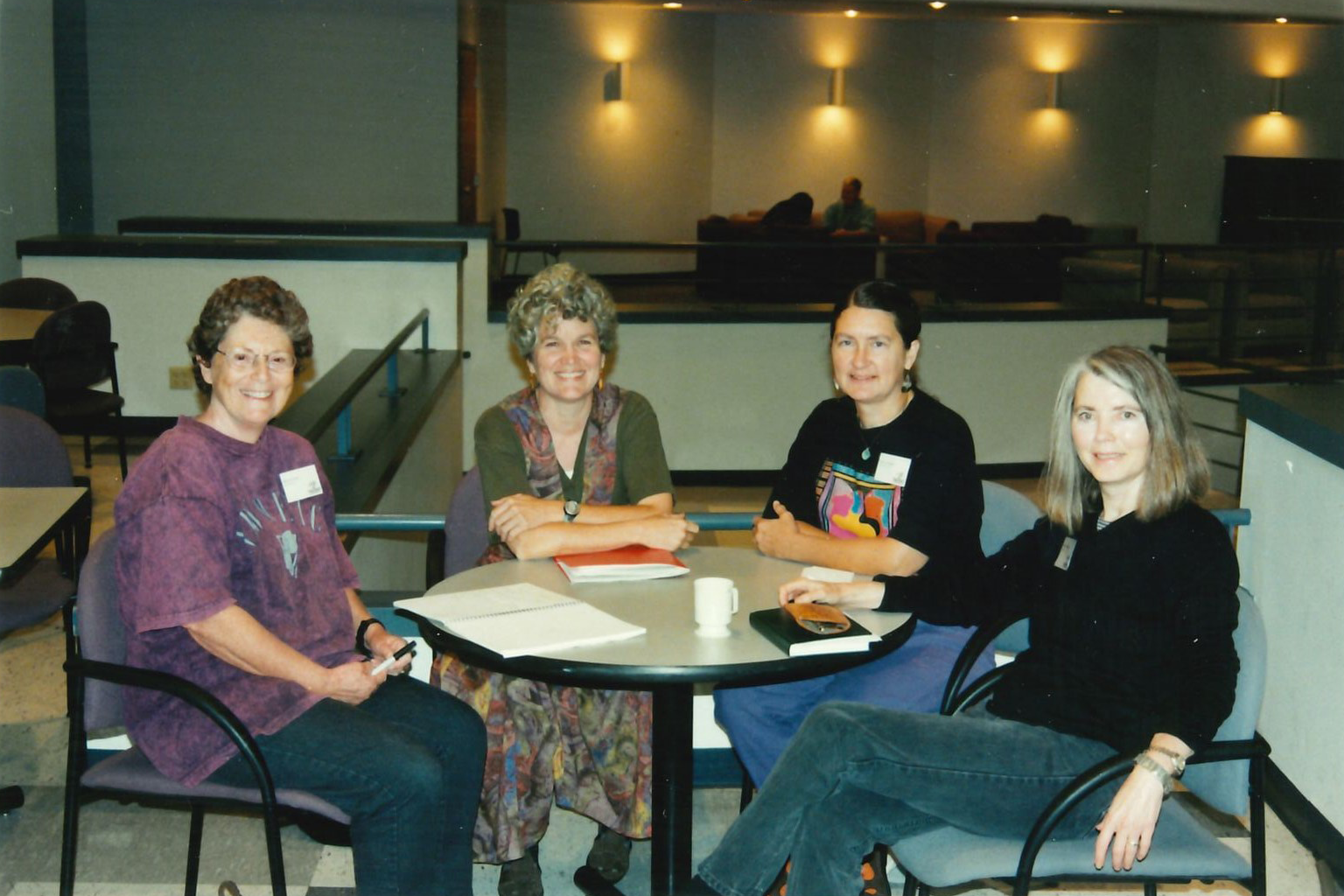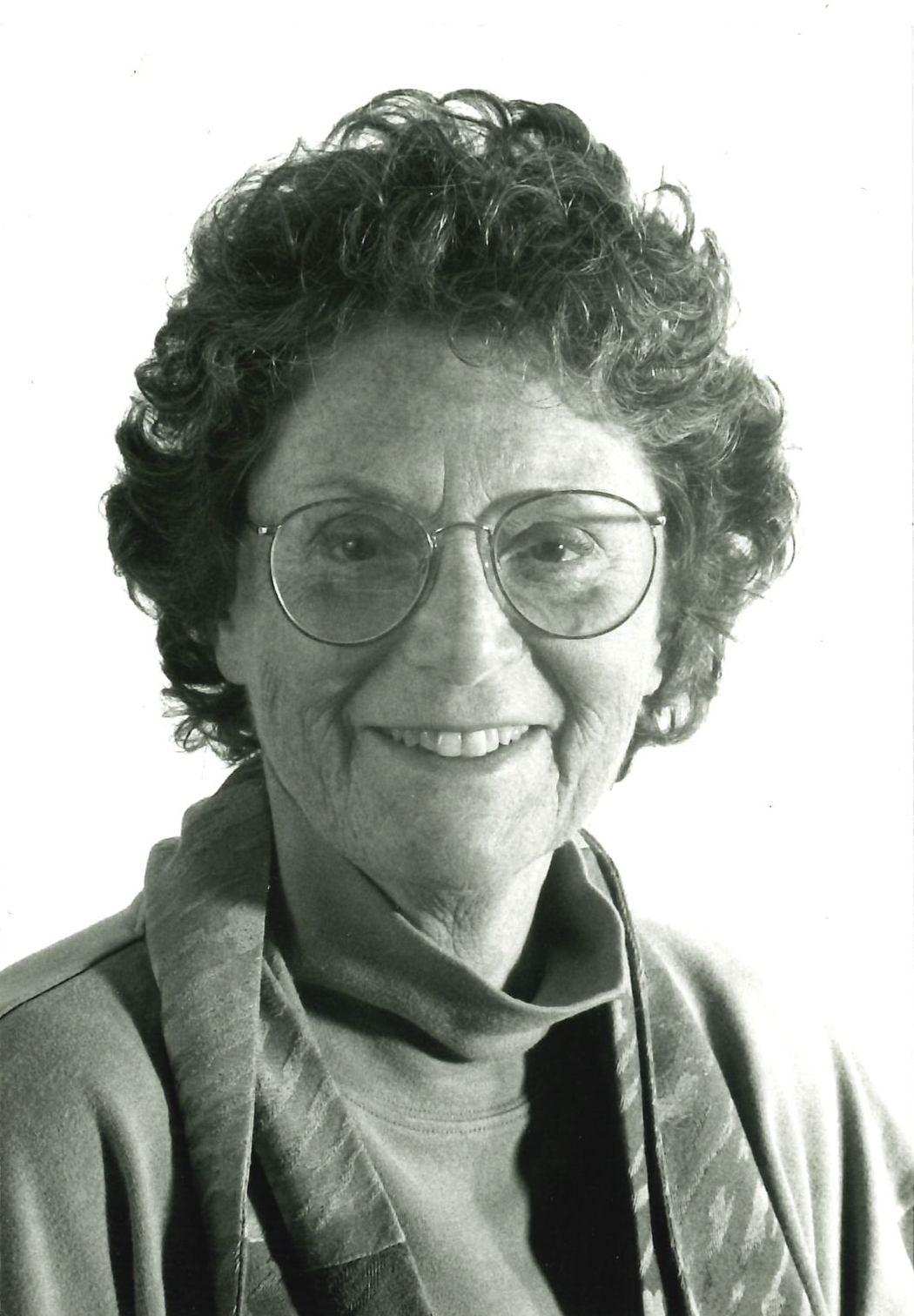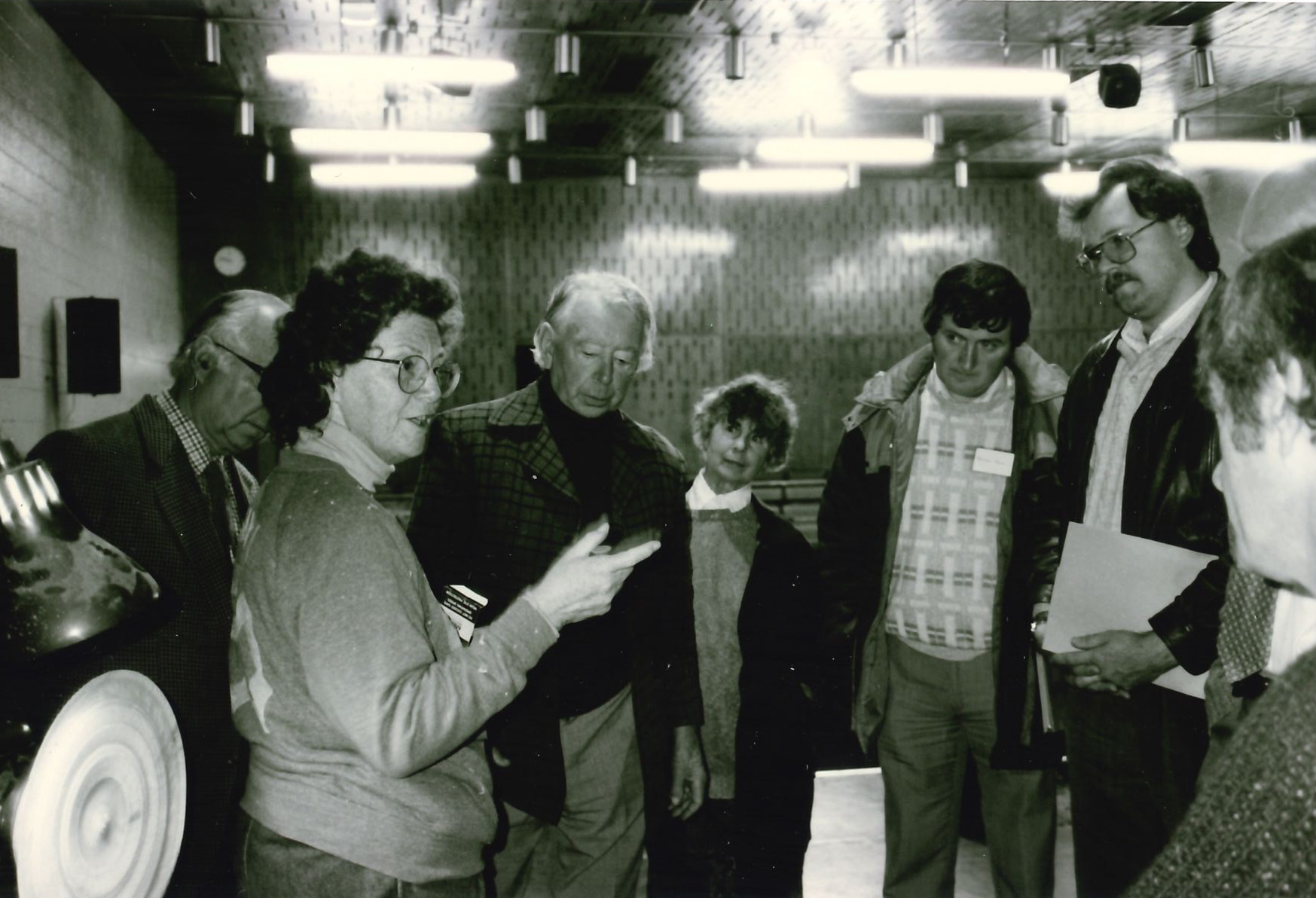Women in Woodworking
“When I first entered the wood turning scene, it seemed a guy world… In the craft world and certainly the woodturning world—macho—has been a part of the scene.”
By Merryll Saylan
The 1997 World Turning Conference was an international forum for scholars, historians, educators and artists to discuss and evaluate historical and contemporary lathe-turning. Jointly organized by the Center, Winterthur Museum, and the Philip and Muriel Berman Museum of Art, the conference featured lectures, panel discussions and demonstrations by 28 presenters from 10 countries. This paper was delivered by Merryll Saylan at the 1997 conference.
In 1890, the year-end issue of The American Architect and Building News, published an essay looking to the future:
“Measures are ripening— to advance the skilled craftsman. Artists must rise in the social scale. Somewhere in the next century the male monopolist will have to contend with female competition, at least in all those callings or occupations that are considered ‘genteel’ or, in better language, all the gentle arts. In Europe less than a thousand years ago, men practiced those arts which for the last three hundred years have been almost exclusively practiced by women.
It may be confidently predicted that such gentle arts as painting and what is still called sculpture—really only modeling—and design of every kind will eventually be practiced by women, to the ultimate exclusion of men. The designer pure and simple will be sorely pressed by the “softer man” in their mutual struggle for existence.”
In 1996, in a review of a women’s exhibition at Banaker Gallery in San Francisco, the question was asked: “Do women design and build differently than do men?” As we approach the end of this century and look ahead, I find myself wondering—have women’s roles changed, what does the future hold, why is the question of difference still asked?
In this session, I plan to give a brief historical introduction followed by a panel discussion with women working in the wood turning field. The panel will be: Betty Scarpino, Connie Mississippi, and Michelle Holzapfel.
After my introduction, I would like them to introduce themselves, talk about working in a field that is primarily male and how it affects them or not? How did they choose this field? Do any of the historical issues and attitudes affect them? Changes they have seen, what would they like to see. Is it possible to prognosticate the 21st century?
David Ellsworth, in an early American Association of Woodturners journal, states that little documentation exists to “indicate that woodturning has ever been anything but a totally male sport.”

David Ellsworth, in an early American Association of Woodturners journal, states that little documentation exists to “indicate that woodturning has ever been anything but a totally male sport.” John Perrault in his essay for the catalogue of the Wornick exhibition talks about “Dad in the basement working away at wood, Mom upstairs sewing.” That’s probably where I went wrong—my grandfather was a tailor of fine women’s clothes and made all my clothes growing up. The man in my house did the sewing. Both Ellsworth and Perrault do mention that the exclusively male domain has changed.
The feminist movement of the 1970’s questioned the standard art history and examined women’s lives as artists. Were there really that few women artists in history? The standard art history text at college, History of Art by H.W. Janson, until recently did not include any women. Feminism challenged art history’s categories and classifications. It challenged the concept that social reality had no bearing on “art,” opening debate about the relationships between culture, economic issues, race, as well as gender and creativity. It explored relationships between craft and fine art. Qualities that have always been associated with femininity—decorative, sentimental, amateur, were negative characteristics associated with craft as well. Women have frequently worked in isolation, juggling domestic responsibilities with their artistic production, thus producing smaller bodies of work, making it more difficult to know a lot about them.
The Renaissance is where we trace the beginning of the artist as the individual or solitary genius. The practice of establishing a difference between art and craft, high art/low art, can be traced here. Women were for the most part excluded from professional art practices such as painting and sculpture and were involved in larger numbers in handicraft production such as existed in the middle ages. Women who entered the cloisters could receive an education. The few female artists that achieved a name usually were relatives of male artists. The humanist ideal of the Renaissance fostered the concept of women as models of modesty, purity, passivity, physical attractiveness, home and family. Whitney Chadwick says that at this time, the “male” art of painting was elevated above the female art of embroidery. Domestic art required manual labor and collective activity rather than individual genius and divine inspiration.
Boccaccio wrote “art is very much alien to the mind of a woman, these things cannot be accomplished without a great deal of talent, which in women is usually very scarce.”
There were, of course, exceptions; Bologna was unique and had a university which educated women since the Middle Ages. Women in Northern Europe also had much more freedom then their contemporaries in the south. A Renaissance historian, Vasari—though helping establish a tradition in which exceptional women artists had a place in history, also created a model that characterized differences between men and women’s art work in choice of subject and manner of execution. Works of size were equated with importance and authority, and proof of male dominance and superiority, women authored work smaller in scale and supposedly modest in conception.
During the 18th century, women tended to be isolated from theoretical and intellectual debates dominating the arts. They were barred from the academies in Rome and Paris, the major centers of art education. They were excluded from life drawing classes and were not trained to work in some of the more prestigious genres. Rousseau believed that women lacked the intellectual capabilities of men and had little to contribute to art or civilization except for their domestic role. Divisions between the Man of Reason and the charming but submissive woman seemed to widen.
Though the Arts and Crafts movement of Britain and America played an important part in the development and ideals of our contemporary craft scene, attitudes toward women were similar. William Morris’ answer to “the woman question” is that women should look lovely, have children and manage the home. The 19th century was a period of great social reform and progress for women. Women fought for educational reform, for the right to vote, for employment.
The Art Journal, a publication of the Arts & Craft movement, published a series of articles about training, education and art for women: “What share of the ordinary avocation of life may be assigned to women is unquestionably one of the most difficult social problems of our time. There are those who will argue that women should in nowise exceed the well-defined bounds that have long ago been marked out for them, but employ themselves only in domestic matters and those feminine duties which properly constitute their province and which they alone are able efficiently to perform. In the lowest classes it has been already solved. The necessity of earning their own bread is apparent from their earliest years. In our consideration of Artwork for women, we find ourselves practically restricted to Industrial or Mechanical art where talent rather than genius finds its scope.”
In the Victorian era, restrictions on professional training were relaxed yet women could not get the same art education as men. It was widely believed too much book learning decreased femininity, and exposure to the nude model would disturb female sexuality. A letter to the Pennsylvania Academy:
“Does it pay for a young lady of a refined, godly household urged as the only way of obtaining a knowledge of true art, to enter a class where every feeling of maidenly delicacy is violated—no possible art can restore her treasure of chaste and delicate thoughts… The qualities that define a successful artist: independence, self-reliance, competition, were not part of women’s domain and a charge from that period toward aspiring women was the risk of ‘unsexing themselves.'”
But by the end of the century the economic reality and necessity—the male drain from the Civil War and the lure of the frontier—were that women needed to be independent.
Schools of Design were established both in the United States and in Britain, teaching the applied and industrial arts. One prospectus stated that it was to give “the means to women to earn a livelihood as well as for the purpose of inducing a more general appreciation of Art.” Women worked in the fields of wood, furniture, woodcarving, turning. In a list of institutions of 1884, there were several programs training women. Woodcarving was on many of the curriculum. Wood turning is rarely listed as a separate entity but part of the general woodworking curriculum.

In the School of Design of Cincinnati, Ben Pitman started woodcarving classes. With a few exceptions, most furniture was cut and assembled by men and decorated by women. “Let men construct and women decorate.” The response to the classes was overwhelming and very quickly they had more than a hundred students. The classes were intended for the rich as well as the poor, but more often it was the rich who took them making things for their home. Several of these women eventually became part of the well-known Rookwood Pottery. Ken Trapp has been credited with first paying attention to the art furniture of Cincinnati.
The Philadelphia Centennial Exposition of 1876 brought more public visibility to women and about a tenth of the works of art in the US section were by women. There was also a Women’s Pavilion prompting a great deal of controversy, arguments that you still hear today such as the issues raised about the National Museum of Women in Washington, D.C. and discussed in the article reviewing the women’s exhibition at Banaker. According to Chadwick, “Ironically, the building became both the most powerful and conspicuous symbol of the women’s movement for equal rights and the most visible indication of women’s separate status.”
In one review of the Women’s Pavilion at the Centennial Exhibition in Philadelphia, 1870:
“The question was naturally asked—have women turned cabinet makers. It could be answered in the affirmative, for several of these pieces were entirely made by women, but these were exceptional.
“Documentation of the careers and names of these makers is very difficult to attain because of tradition, attitudes, and regulations of the time.”
Despite the need for work and even after receiving training, women earned low wages for their work. Justification was based on “amateurish” and inferior work. Charles Ashbee talks about the competition from “dear Emily,” who did delicate and modest work, who sold before being ready and who were supported by parents. Many of the attitudes and commentary of that period directed toward women remain part of the discussion and hierarchy within the crafts field today.
I grew up in a family with immigrant grandparents, my mother worked (or rather we all worked) in the family trucking business, and as I said earlier, my grandfather sewed. Traditional male/female roles were never that sharply defined, yet growing up in the 1950’s, marriage and family was what women were supposed to do. I did that but the desire to do more was always there. I remember taking an aptitude test in high-school coming out high in both aesthetics and mechanics—completely confusing the counselor. As an adult student in university, taking woodworking, I never thought about male or female roles or differences.
Are there women doing big hollow vessels? When I read or hear some of this history, I believe I’ve heard or felt them on a personal level.
When I first entered the wood turning scene, it seemed a guy world. I’ve had discussions in the past about the shortage of women teaching or demonstrating. I know that for me technical concerns were never as important as more personal issues in my work and that discussion about those issues have changed over the years for the better. In the craft world and certainly the woodturning world—macho—has been a part of the scene. Are there women doing big hollow vessels? When I read or hear some of this history, I believe I’ve heard or felt them on a personal level.

In the field of woodworking over the last 20 years that I’ve been in the field, I’ve seen tremendous change. When three women are running major wood programs, when AAW had several women on the roster this summer, and when the exhibition taking place at ASU next month has four women included in the group of ten artists, things are good. Yet I did hear—and it may have been a joke—that the exhibition was stacked with women. And sad to say, sometimes I still feel sexism. This summer as part of the ITE residency program, I found myself thinking, how many young women who had small children such as three of the young male residents had, would be able to come and work for two months. Granted there might not be three young women, but even so, I doubt very much if they would have been there.